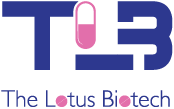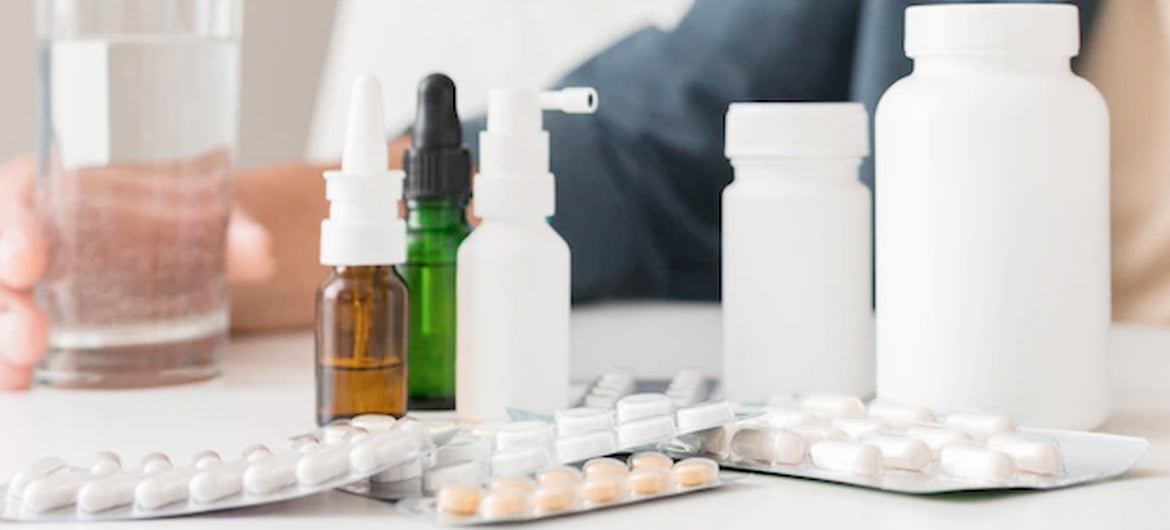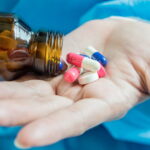Introduction:
Men worldwide are affected by the prevalent multifaceted condition known as erectile dysfunction (ED). Clinical outcomes are influenced by physical sickness, coping mechanisms for life’s pressures, or an unpleasant relationship. The first-line treatment for ED is phosphodiesterase type 5 (PDE5) inhibitors, which are known to be effective and well-tolerated.
The most popular and extensively researched PDE5 inhibitors include sildenafil, tadalafil, and vardenafil. When deciding which PDE5 inhibitor is the most effective for a given patient, developing an individualized treatment plan, and moving beyond “experience-based” subjective opinions, unfounded ideas, and prejudice regarding currently available drugs, make sure to consider the data gathered during a routine diagnostic workup for ED.
Background of the study:
A researcher must understand the normal physiology of penile erection for a better understanding of the mechanism of action of PDE5 inhibitors. Penile erection is an area of medicine that currently involves the usage of PDE5 inhibitors. After sexual stimulation, nerve impulses release neurotransmitters in the corpora cavernosa, which causes endothelial cells to produce nitric oxide. The endothelial cells further diffuse into the adjacent smooth muscle cells that stimulate the formation of cGMP, leading to vasodilation and increased circulation of penile blood.
A healthy and active love life can significantly improve one’s quality of life. Sexual health is crucial to one’s entire health and well-being. Heart disease patients frequently experience sexual dysfunction, particularly erectile dysfunction (ED) in men (CVD). Risk factors and pathophysiological connections between CVD and ED include endothelial dysfunction, inflammation, and low plasma testosterone levels.
ED has been demonstrated to be a distinct and early predictor of future CVD events, offering a crucial window for starting preventative interventions. As a result, ED screening and diagnosis are vital for the primary and secondary prevention of CVD since they provide an accessible and affordable alternative to other investigative cardiovascular diagnostics.
After discussing the various pharmacological properties and the patient’s unique sexual habits, preferences, and expectations, the doctor and patient should jointly decide on the optimal PDE5 inhibitor for each patient in the clinical context. Unfortunately, it is still debatable whether information related to the patient or any aspect of his illness should affect the decision of one treatment over another, and if so, how. In addition, matching a given patient’s profile to a specific PDE5 inhibitor frequently depends more on subjective opinions than objective data.
PDE5 inhibitors and their interaction with other diseases:
- Diabetes:
The doctor and patient should mutually choose the best PDE5 inhibitor for each patient in the therapeutic setting after discussing the numerous pharmacological features and the patient’s particular sexual habits, preferences, and expectations. Sadly, it is still debatable whether information related to the patient or any aspect of his illness should affect the decision of one treatment over another, and if so, how.In addition, matching a given patient’s profile to a particular PDE5 inhibitor frequently depends more on subjective judgment than objective data.
- CV Diseases:
The Second Princeton Consensus Panel’s guidelines state that people with cardiovascular disease are divided into three risk clusters: low, middle, and high.ED is a crucial precursor for CV events that occurred two to five years ago. Given that they share the same pathogenetic mechanism, i.e., endothelial dysfunction—these two disorders are inextricably linked.
It is crucial to optimize the therapy of cardiac heart failure (CHF) before treating ED in individuals with CHF. As CHF symptoms subside and exercise capacity rises, sexual function improves. PDE5 inhibitors are the first-line therapy if this strategy is unsuccessful. PDE5 inhibitors are safe and effective in treating erectile dysfunction (ED) in patients with CHF who are NYHA Classes II and III.
In addition, there is a link between an increase in EF by PDE5 inhibitors and improving depressive symptoms and quality of life. Sexual activity is still not advised for NYHA IV patients because it is just as risky for them as doing simple housekeeping or ascending a flight of stairs.
- MetS and obesity
Although preliminary cross-sectional data did not reveal any correlation between ED and obesity, longitudinal investigations have unequivocally shown a causal link between baseline obesity and the development of ED, how body weight affects the effectiveness of PDE5 inhibitors when taking sildenafil daily and tadalafil in single and repeated doses has been examined. The effectiveness of the medication was, in every instance, unrelated to baseline BMI. However, there are no data on vardenafil.A significant component of MetS, a collection of metabolic abnormalities linked to insulin resistance and an elevated risk of developing cardiovascular and metabolic illnesses, is central obesity. In addition, numerous epidemiological studies have indicated that MetS may be a risk factor for ED.
- Dyslipidemia:
Several clinical studies have identified an association between ED and hyperlipidemia (dyslipidemia). There is a connection between low-density high lipoprotein cholesterol (LDL-C) levels and ED.Hypercholesterolemia at baseline was also demonstrated as a predictor of ED 25 years later.
As a result, various investigations have shown that lipid-lowering medication can improve EF in both clinical and experimental tests. Statin therapy may also enhance the effects of PDE5 inhibitors and EF. In addition, the effectiveness and safety of all three PDE5 inhibitors have been established in patients with dyslipidemia. Vardenafil was successful in males with dyslipidemia regardless of LDL-C levels or the total to high-density lipoprotein cholesterol ratio, according to specific drug data.
- Prostatic Disorders
Numerous epidemiological studies have suggested that there may be a cause-and-effect relationship between lower urinary tract symptoms (LUTS) and ED beyond simple age-related coincidence. Studies on each of the three PDE5 inhibitors now on the market have demonstrated improvements in LUTS and ED in men with severe issues in both areas without appreciable adverse effect augmentation. Radical prostatectomy (RP) is still the go-to treatment for men with clinically localized prostate cancer, but postoperative ED is a frequent consequence. It is mainly explained by transient neuropraxia of the cavernous nerve, which causes penile hypoxia, smooth muscle apoptosis, fibrosis, and veno-occlusive dysfunction. The idea of early penile rehabilitation- preventing ED after RP by combating post-RP pathophysiological changes during neural repair- is one of the most promising new therapies. In addition, PDE5 inhibitors can help penile erections when needed. While there are inconsistent findings from daily usage of short-acting PDE5 inhibitors, evidence with tadalafil 5 mg daily dosing is still lacking.
- Endocrine disorders:
Hormonal imbalance may be a secondary cause of ED. Hypogonadism is common in ED patients, and hyperprolactinemia and thyroid problems are often uncommon.More research is required to fully understand the impact of thyroid hormones on male sexual response, as hyperprolactinemia primarily affects sexua
l desire.Overall, the net effect of testosterone (T) on erection is moderate since it positively regulates both the enzymatic pathways required for its start (positive influence on nitric oxide synthase [NOS] and adverse effect on RhoA/ROCK) and termination (positive impact on PDE5). T’s primary physiological activity is to time modify the erectile process in response to sexual desire, concluding erections with sex. Therefore, it is generally agreed that the parts of male sexual behavior that are most T-dependent are sexual ideas and drives.
For all the reasons mentioned above, treating hypogonadism improves penile erection dysfunction in clinical and experimental animal models. T administration, on the other hand, is mainly ineffectual in normally eugonadal people. According to this data, a meta-analysis of placebo-controlled clinical trials demonstrated that investigations of middle-aged and older men with low T (T concentration 12 nmol/L, 346 ng/dL) resulted in a substantial but moderate improvement of all areas of sexual performance compared to placebo. It’s interesting to note that the meta-regression study showed an inverse relationship between the baseline T concentration and the effect of T on EF.
Numerous studies have suggested that hypogonadal ED patients may respond less favorably to PDE5 inhibitors because androgens influence the production of both NOS and PDE5 [35]. However, according to several uncontrolled and four randomized placebo-controlled investigations, hypogonadism interferes with the effects of PDE5 inhibitors on EF (Table 3). Therefore, based on the findings of these trials, it is possible to increase total efficacy from 33% to 100% by using T and PDE5 inhibitors.
All of these findings highlight the idea that hypogonadism must be excluded and, if present, thoroughly treated before any PDE5 inhibitors are prescribed.
- Stroke:
Suppose PDE5 inhibitors are given 24 hours after a stroke. In that case, recent animal studies have shown significantly enhanced cGMP levels and angiogenesis, significantly reducing infarct size, and increasing protection against ischemia-reperfusion injury. PDE5 inhibitors may counteract the effects of declining cGMP levels in aging by increasing neuronal development and short-term memory.PDE5 inhibitors were used in a study to measure cerebral blood flow, but the results showed no change in blood velocity. In individuals with erectile dysfunction, pulmonary hypertension, and other conditions with a compromised endothelial dilatory
- Hypertension
Between 15% and 25% of patients receiving treatment for hypertension have ED. Men with systolic blood pressure (SBP) > 140 mm Hg report ED more than twice as frequently as those with SBP 140 mm Hg. Additionally, it has recently been shown that pulse pressure, the arithmetic difference between SBP and diastolic blood pressure, can predict significant CV incidents in patients with ED.Compared to more recent medications such as calcium antagonists, angiotensin-converting enzyme inhibitors, angiotensin receptor antagonists, and nebivolol, older antihypertensive drugs like diuretics, beta-blockers, and centrally acting drugs have been more frequently linked to detrimental effects on sexual function.
However, the few placeboes- or active comparator-controlled studies that have been published thus far did not note an adverse effect of beta-blockers and thiazide diuretics. Therefore, this point has not yet been fully clarified. In contrast, spironolactone therapy causes undeniable sexual complaints because of its antiandrogen effects.
Possible interactions between PDE5 inhibitors and antihypertensive medications are a common clinical problem. PDE5 inhibitors are typically well tolerated when provided to patients taking antihypertensive drugs. However, patients taking PDE5 inhibitors should take caution when taking alpha-blockers or beta-blockers interacting with alpha-adrenergic receptors. Alpha-blockers should be started at the lowest dose, especially in individuals already taking a PDE5 inhibitor at the recommended dosage.
In contrast, alpha-blockers patients should start PDE5 inhibitors at the lowest suggested amount. Therefore, it is crucial to monitor the Blood pressure and adjust the antihypertensive dose. It is because no particular studies have been done on individuals receiving any antihypertensive medication starting daily treatment with tadalafil 5 mg.
Conclusion:
The PDE5 inhibitors now on the market, such as the more recently approved avanafil, offer ED sufferers a secure, practical, and efficient way to enhance erectile function. Due to their convenience, quick start of the action, and tolerability, these medications have taken the place of other ED treatments as the first-line therapy.Â
Therefore, deciding whether an agent is superior to another is challenging due to insufficient head-to-head trials. However, more research comparing these drugs is required to discern the potential advantages of each, particularly in particular patient subsets. In addition, according to each patient’s response and need, prescribing options are available with all PDE5 inhibitors. Therefore, consider each agent’s cost, simplicity of use, and side effects while determining the best course of action.
The factors that a healthcare professional should note during the visit of the ED patient and their importance for selecting a PDE5 inhibitor are outlined. Unless there are apparent contraindications, all PDE5 inhibitors currently on the market may be effective in treating any patient with ED. Sildenafil, tadalafil, and vardenafil are the three commonly used PDE5 inhibitors; nevertheless, there are distinctions between them that may impact the therapeutic outcome, patient satisfaction with the prescribed medication, and long-term adherence to treatment.




3 Comments
I am 6 feet tall and 220 lbs. This shirt fit me perfectly in the chest and shoulders. My only complaint is that it is so long! I
like to wear polo shirts untucked. This shirt goes completely past my rear end. If I wore it with ordinary shorts, you
probably wouldnt be able to see the shorts at all – completely hidden by the shirt. It needs to be 4 to 5 inches shorter
in terms of length to suit me. I have many RL polo shirts, and this one is by far the longest. I dont understand why.
If I wore it with ordinary shorts, you
probably wouldnt be able to see the shorts at all – completely hidden by the shirt. It needs to be 4 to 5 inches shorter
in terms of length to suit me. I have many RL polo shirts, and this one is by far the longest. I dont understand why.
It needs to be 4 to 5 inches shorter
in terms of length to suit me. I have many RL polo shirts, and this one is by far the longest. I dont understand why.